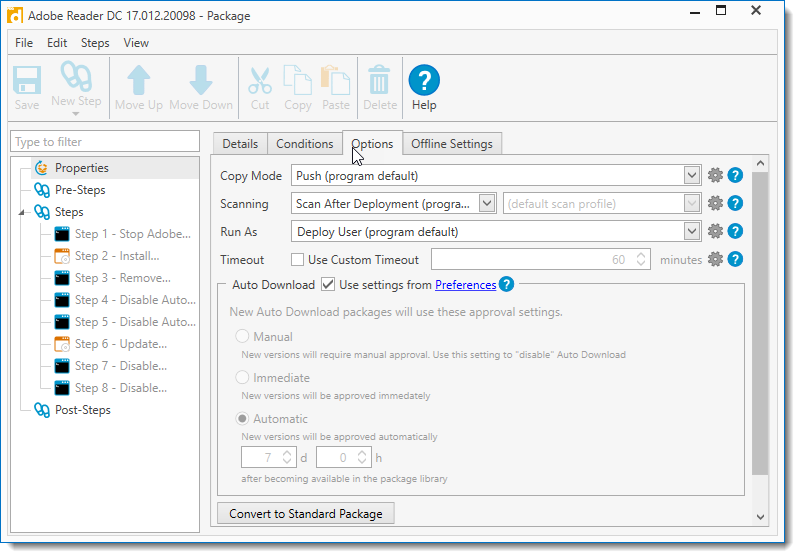Pdq Deploy Kill All Chrome Instances
How to Accurately Choose Your Targets in PDQ Deploy Lex shows you the best way to ensure that your deployments hit exactly where they need to. PDQ Deploy is a software deployment tool used to keep Windows PCs up-to-date without leaving your chair or bothering end users. Deploy Almost Anything. Silently deploy almost any Windows patch or application (.exe,.msi) to multiple Windows PCs simultaneously.
What do you do when a program does not respond or hangs indefinitely on your machine? Often, user hit the Ctrl + Alt + Del or Ctrl + Shift + Esc combination to launch task manager and put an end to end that process/application. However, I have faced situations when that fails to work too.
Under such circumstances, the Windows Command Prompt is the only option that I see. It is easy to kill a program from there and get things working again. Here’s the two-step method that I suggest.
Step 1: Open the Command Prompt by typing cmd in the Windows Start search and key in the command tasklist.
Instantly, you will see the list of processes that are currently running and active on your machine. Take note of the PID (Process ID) of the process that you want to kill.
Step 2: Follow up with another command taskkill /pid PID where, PID is the Process ID of the process you want to kill. For example if I wanted to kill firefox.exe, I would type taskkill /pid 976.
For more options on taskkill type in taskkill /?. I know there are many more ways of doing the same and I would leave the comments section open for that discussion. Let us brainstorm. 🙂
Also See#cmd #Tips & TricksDid You Know
Bugdroid was designed by Irina Blok, a graphic designer.
More in Windows
Opera vs Opera GX: Should You Switch to the Gaming Browser
So you’ve looked in task manager, and there’s a dozen iexplore.exe processes listed! Clicking the End Process button for each will take far too long… so how can we kill them all in one step?

The answer is to use a quick command line utility that kills all the processes by name, though we’ll make it even easier for you and create a re-usable icon that will kill them in a single step. Of course, this same technique will work for any application that opens a dozen processes… like, for instance, Google Chrome.
For those that are wondering why we don’t just close the window, we’re trying to forcibly close them without leaving any stragglers behind, which seems to happen all too often.
Kill Multiple Processes From the Command Line
The first thing you’ll need to do is open up a command prompt, and then use the taskkill command with the following syntax:
taskkill /F /IM <processname.exe> /T
Pdq Deploy Training
These parameters will forcibly kill any process matching the name of the executable that you specify. For instance, to kill all iexplore.exe processes, we’d use:
taskkill /F /IM iexplore.exe
It’s really as simple as that… the processes will immediately be killed.
Note that if you are using Windows Vista, you can only kill “normal mode” apps from a regular command prompt… if you want to kill an application running as administrator, you would need an administrator mode command prompt.
Create an Icon to Force Kill All iexplore.exe Processes
Since we don’t really want to drop to the command prompt every single time we want to recycle Internet Explorer or Chrome, we can setup an icon to do the work for us.
Right-click anywhere on the desktop and choose New Shortcut:
Paste in the following if you want to kill Internet Explorer, otherwise you can use a different executable in place of iexplore.exe.
taskkill.exe /F /IM iexplore.exe /T
Give the shortcut a useful name, and then open up the properties. Make sure to choose to Run as Minimized, and then you can select a more fitting icon… I chose the one that looks the most like recycling.
At this point you have an icon that will completely kill all running Internet Explorer windows. You could even have assigned a shortcut key…
Now that you’ve learned this technique, you can use it for all sorts of other useful things as well.
Pdq Deploy Free
READ NEXTPdq Deploy Registry Settings
- › How to Stream UFC 239 Jon Jones vs. Santos Online
- › How to Check Your Wi-Fi Signal Strength
- › What Is “Upscaling” on a TV, and How Does It Work?
- › How to See the Applications Using Your Network on Windows 10
- › How to See All Devices on Your Network With nmap on Linux